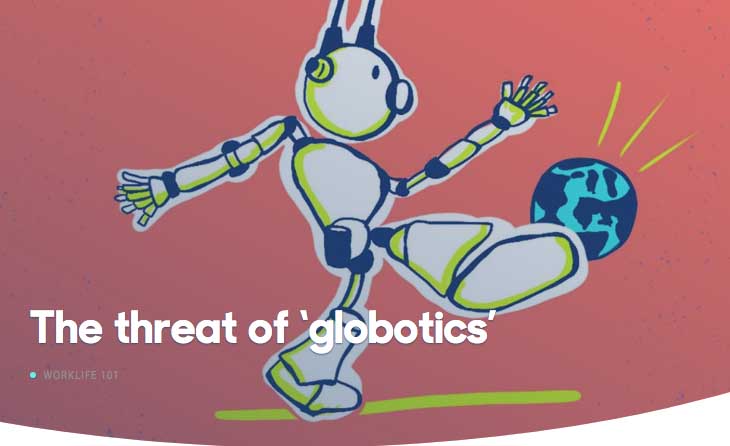Globotics is the next wave in the gig economy gone global.
Robots are coming for our jobs, and they won’t stop at the factory floor on their quest to replace us. Richard Baldwin, professor at the Graduate Institute in Geneva, says artificial intelligence can already perform skilled labour tasks at the highest level — the type of work needed not only in our offices and boardrooms, but even hospitals and courtrooms.
Combine sophisticated machine-learning with an increasing reliance among businesses on using remote workers, and you have what Baldwin calls ‘globotics’: a two-pronged disruption that could displace white-collar and service workers faster than ever.
It’s no secret that most routine-oriented tasks, like scanning databases or compiling lists, can be completed speedily by AI software. But in fact, a Gartner report predicts that by 2022, 20% of workers engaged in primarily nonroutine tasks will rely on AI as well. Similarly, remote workers of the gig economy are able to perform all of the functions of a normal employee from wherever in the world they’re located for a fraction of the cost.
“But we know that, while AI-driven white-collar robots are good at repetitive or predictable tasks, they fail at empathy, creativity and making ethical choices,” Baldwin says. Remote gig workers are at a disadvantage, too: they “can mimic administrative work, but they cannot do jobs that require us to be in the same room as other humans or machines.”
This is where office workers might find the antidote to globotics: honing their skills in areas where remote gig workers and AI cannot. According to Baldwin, the key to staying relevant will be to avoid competing with AI and remote workers, instead focusing on specialised in-person duties. Above all, he says, employees must realise that even in the age of robots, being human has its advantages.
This is one of the 101 indispensable things you need to know about work today. Click here to see the rest.
Image credit: Piero Zagami and Michela Nicchiotti.
source: bbc

